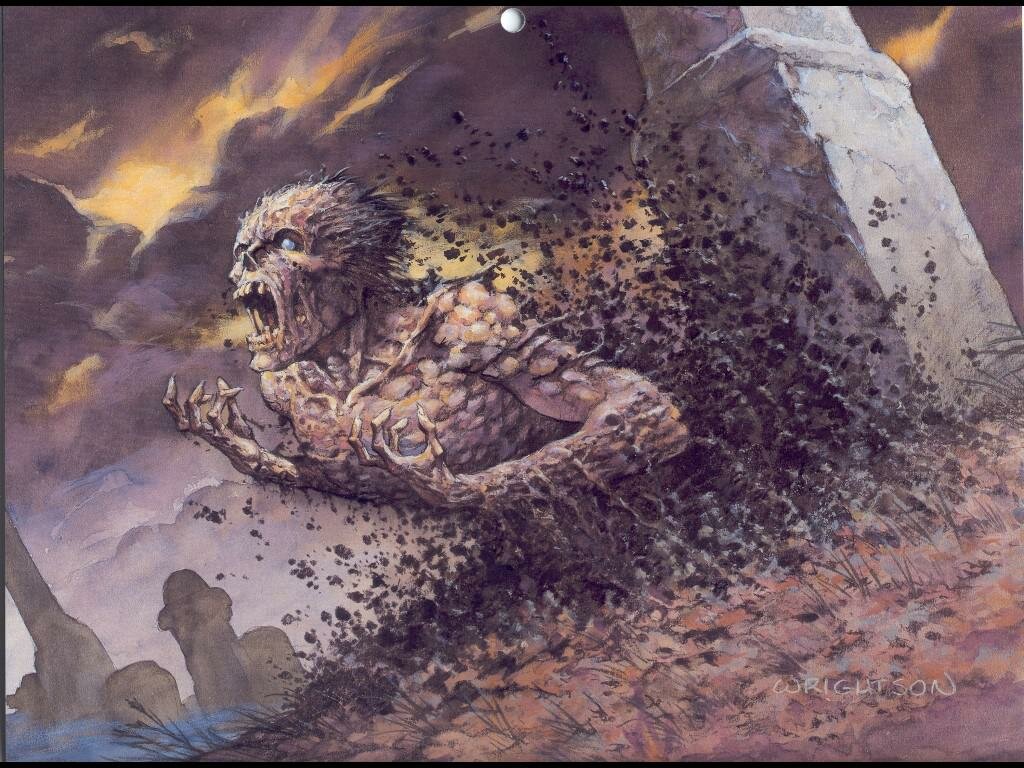Top 10 Chemical Warfare Agents: Bad Chemistry between Nations
Suggested by SMSSince the First World War, militaries across the land have strived to be at the forefront of new weaponry and tactics on the battlefield. Chemical weapons are considered weapons of mass destruction, a term we are all familiar with. Their goals of causing mass destruction without sacrificing man power inevitably led to the use of chemical weapons in war. Chemical warfare agents have the advantage of causing irreparable damage to humans and some work much more quickly and precisely than traditional methods. Agents like HN3 nitrogen mustard gas can kill at the molecular level. Others like 3-Quinuclidinyl Benzilate cause hallucinations and confusion.
There are no limits to the damage chemical warfare agents can cause by virtue of the way they work. The use of these weapons has been largely condemned by those who consider themselves a part of the “civilized world”. However, as we continue to see in the world today, there are many nations run by callous, cold military leaders who will stop at nothing to inflict pain on others—even if it means stockpiling weapons considered to be too dangerous for even war.
Here are the top ten chemical warfare agents on the market at this very day and age. Let’s hope we never get the pleasure of experiencing these effects firsthand.
10. HN3 Nitrogen Mustard

HN3 Nitrogen Mustard hits the enemy hard and deep. Its effects penetrate at the molecular level, even affecting human DNA. It also disintegrates bone marrow. HN3 nitrogen mustard causes interruptions in the body’s immune responses and can damage the respiratory tract as well, essentially shutting down airways and passages in the body. It also damages the eyes and skin tissue. To make matters much worse, the cellular effects, although immediate, don’t necessarily cause immediate pain. Most of the symptoms relating to HN3 nitrogen mustard are delayed. It should go without saying that if exposed to too much of this agent, death is certain.
HN3 has never been used on the battlefield or in war. If inhaled, easily permeable membranes in the body are at risk and sweaty skin as well enhances the effect of HN3. As a spray, HN3 can contaminate food, water and crops.
9. Ortho-chlorobenzylidene malononitrile

Tear gas is a very popular agent of chemical warfare. It’s usually the quickest way to quell a crowd. Ortho-chlorobenzylidene malonitrile or CS is one of the most common forms. Its effects include affecting circulatory functions, vomiting and just flat out bringing people to their knees. CS is low on the toxic scale and as such has become a regular part of most countries’ chemical arsenal. But don’t let that fool you because its strong effects, while not deadly are known to be extremely debilitating.
Depending on the concentration and dosage, the effects CS has on humans vary. Sweaty soldiers are in for it since CS burns when in contact with moisture on the body and also causes uncontrollable tears, coughing and extreme amounts of mucus coming from the nose. Interference is also caused with breathing and CS also causes confusion and a loss of bearings. Luckily, most of these effects wear off in a short time.
8. Adamsite

When someone makes you sick, return the favor with a sickening compound of your own. Adamsite will definitely do the trick. This chemical warfare agent appears as a crystalline solid that becomes smoke when heated. It causes massive onset of vomiting and is particularly effective in closed spaces, common in hostage situations or standoffs. It is typically used for riot control. Although the effects of adamsite typically wear off in thirty minutes or so, prolonged exposure to high concentrations can result in chronic illness or even death.
Through aerosol, adamsite can be spread in thin layers in the air. It’s difficult to dissolve so it’s not a reliable weapon to contaminate water sources. With that said its primary effectiveness as a weapon of chemical warfare is inhalation and contact with the skin or eyes.
7. Diphosgene

Diphosgene appears as a gas with no color and has a white, cloud like form. It can also be found as a light golden liquid at lower temperatures. Diphosgene has become a staple in the chemical warfare arena since its original use in the First World War by Germany. When released in high amounts, it has the power to suffocate the enemy. Diphosgene has a very undesirable odor which can make it difficult to breathe and affect the senses. However, the odor only lasts for a short time. So in addition to its suffocating effects, enemies may not know if they’ve been exposed to lethal doses until it’s too late.
While known for its quick effects, diphosgene breaks down too rapidly to effectively contaminate water, food or crops. Given that, it has more use in stunning an opponent on the battlefield. It is typically inhaled by the enemy and its immediate effects include severe irritation to skin tissue and the eyes.
6. Diphenylcyanoarsine

The Germans used Diphenylcyanoarsine gas as a weapon in World War I. This agent appears as small crystals and has a distinct odor. Its effects range from nausea and motion sickness to headaches and vomiting. It can also cause uncontrollable crying. One of its more devastating effects however, is the buildup of fluid on the lungs which can cause death.
Although not particularly flammable, diphenylcyanorasine can explode in the air as a result of compounds formed. It is also dangerous when in close proximity to metals and while in containers. The tendency of this agent to contaminate waterways makes it a dangerous weapon to use in sewers and in close quarters. It is highly toxic and even small contact with the skin can result in injury or death. To make matters worse, its toxic effects are sometimes delayed making for one heck of a weapon on the battlefield.
After the Second World War, large amounts of diphenyclyanoarsine were dumped and disposed of in Japan and Europe. Today, many are concerned about the impact this may have had on the environment and rightly so.

5. 3-Quinuclidinyl Benzilate
What better way to stun your enemy than to get them high? Quinuclidinyl Benzilate otherwise known as QNB is known to cause mass discombobulating effects and hallucinations. This drug causes severe sweating episodes and can even cause over-salivation. How annoying is that? While not necessarily a deadly chemical weapon, the effects can be extreme if the dosage is high. It also causes problems with circulation in the body and can disrupt the digestive system. Aside from the hallucinatory effects, QNB can impair vision as well.
QNB appears a solid, white crystal and can be ground into powder for dissemination. Like other agents, it can be spread through aerosol and can contaminate air, water, food and crops. It can also be inhaled, swallowed (when dissolved in a liquid), and affect enemies through contact with the skin or eyes.
4. Chloropicrin

When the riots break out, Chloropicrin is the weapon of choice. It has effects similar to that of tear gas and can irritate the eyes and lungs. It was used initially in the First World War and stored for later use during World War II. It is no longer allowed as a weapon in the war zone. It is a slightly yellow liquid and has a very pungent odor. It also has painful effects on the eyes and nasal cavities. One of the worst fears related to this agent is pulmonary edema or fluid buildup in the lungs. Pulmonary edema can lead to failure of the entire respiratory system and heart attacks. In World War I, Germans used the agent successfully against Allied troops. While chloropicrin itself wasn’t as lethal as some of the other chemicals used, troops were forced to take off their gas masks and vomit. Consequently they were exposed to other deadly gases. A large number of soldiers on the Italian front died as a result. When Chloropicrin makes contact with the eyes it can cause them to swell and liquefy the cornea. Imagine your eyes literally leaking from the socket. This agent is truly one of the most horrifying on this list.
It can be spread through aerosol sprays and can contaminate water, food and crops. Given its high stability, it is not easily broken down like other chemicals which make it that much more difficult to treat when exposure occurs.
3. Methyldichloroarsine

The best way to describe Methyldichloroarsine is poison ivy on steroids. First used in World War 1, it is a violent irritant and used by militaries who desire a biting effect on their enemies. Its effects are almost instantaneous when it makes contact with the skin or is inhaled. The effects of Methyldichloroarsine can linger for days if not addressed immediately. Within 32 hours, blisters can form and it can kill in minutes if the dosage is high enough. This agent can also penetrate rubber and even gas masks. This agent is particularly dangerous to its effects on muscles. It can cause spasms and involuntary muscle contractions including affecting the eyelids. Imagine being effectively blinded because you can’t open your eyes. For this reason Methyldichlorarsine was the first of its kind to be used in war by the Germans.
Methyldichloroarsine can be spread through aerosols, explosions, and other gas based methods like foggers and humidifiers. Inhalation of Methyldichloroarsine is extremely dangerous. The agent is poisonous and can have disastrous effects on the lungs and respiratory system.
2. Phosgene Oxime

One surefire way to turn your enemy red with anger is phosgene oxime. As a nettle agent, phosgene oxime is highly corrosive and can cause hives and insatiable itching. Ouch! It has a variety of appearances including as a solid, crystal like structure or as a liquid. Although little is known about its direct effects on humans, what we do know is phosgene oxime works extremely fast. In fact, this chemical warfare agent is in a class of its own, as no other chemical agent produces pain at a quicker rate than phosgene oxime. It immediately destroys tissue (known as necrosis) and can work its way through clothing, rubber or other protective barriers much faster than other chemical warfare agents. Although phosgene oxime is yet to be used in an actual war zone, militaries around the world are wary of its devastating effects on the skin and how that can make soldiers more vulnerable to other chemical weapons. To add insult to grave injury, phosgene oxime really stinks.
Like many other chemical weapons, phosgene oxime is generally disseminated as vapor. Subsequently, it can contaminate air, food, and water. It is a deadly chemical if it is inhaled, contacts the skin or gets in the eyes.
1. Cyanogen Chloride (CK)
If you think you’re going to survive one dose of this chemical, don’t hold your breath…literally. As either a liquid or gas, cyanogen chloride interrupts the body’s respiratory system and makes it difficult to use oxygen. A fast killer, cyanogen chloride affects the entire body. Low oxygen levels affect a number of vital organs including the brain, lungs, heart and blood vessels. In its gaseous form, it can even choke a person to death if the vapors are inhaled. Although used for commercial purposes as well, it is noted as a possible chemical warfare agent.
Highly toxic, the effects of CK are rapid. It can cause drowsiness in the enemy and symptoms of nausea. It can even paralyze humans rendering them defenseless and can cause them lose consciousness. Significant swelling can come as a result of edema or the buildup of fluid beneath the skin. This can impair movement and be extremely painful.
There are a variety of ways it can be used in war. Cyanogen chloride can be disseminated through the air as a gas or through aerosol. Using the latter method of liquid spray, it can contaminate water supplies, crops and food. It can also be deadly if it is ingested or makes contact with the skin or eyes. It is possible that CK can penetrate gas masks as well. Due to CK’s reactive nature, it can explode unexpectedly.
There are number of reasons why chemical warfare has become a common practice among nations. Rather than blunt destruction, damage can be dealt through toxic contamination and effects at the nuclear level. They are far from conventional and make for new, creative strategies that can turn the tide in battle. Depending on the method of delivery, chemical weapons have the potential to do lots of damage on the field. Elements and their atoms are unique in their reactive properties and there are a myriad of known and unknown compounds that are capable of causing death or severely hindering enemy resources. From incapacitating the enemy for the purposes of surprise attacks to contaminating resources for a slow and painful death, chemical weapons are some of the most dangerous means available to those involved in war. Nations have gone through great trouble to stockpile these weapons for future use despite efforts by international entities such as the Chemical Weapons Convention (CVC) to eradicate them. Given that, there are number of agreements and treaties already in place to curb their use. Hopefully, those agreements and treaties do their job.










